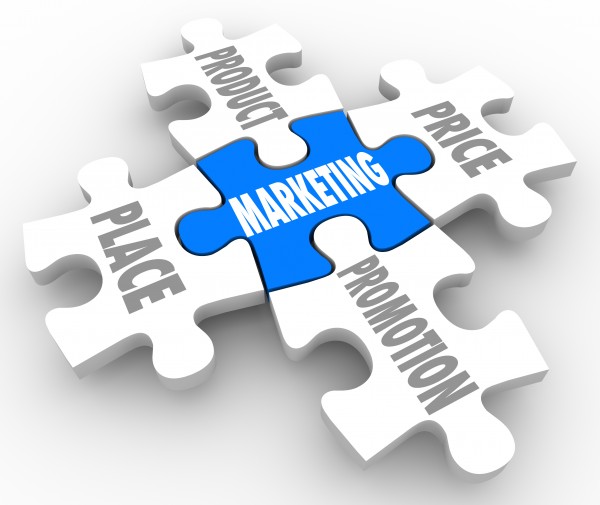 Artificial Intelligence. Chatbots. Video marketing. Backlinking and influencers. Voice search and smart speakers. It seems that the latest marketing trends change by the hour, and it’s getting more difficult to stay on top of what we, as small business owners, should be focusing on when trying to get the word out about our products and services.
Artificial Intelligence. Chatbots. Video marketing. Backlinking and influencers. Voice search and smart speakers. It seems that the latest marketing trends change by the hour, and it’s getting more difficult to stay on top of what we, as small business owners, should be focusing on when trying to get the word out about our products and services.
Using technology wisely in your marketing outreach can help you stand out from your competition. But the truth is—these trends are all simply new angles on established tactics.
These trends are not necessary to the growth and success of EVERY business. Not every new tactic you hear about is an investment that will help your business thrive in the long run.
In fact, I challenge you to get back to the basics when developing a plan to market your company. This simple method for business growth is based on the Four Ps of marketing: product, price, place and promotion. Let’s break down the 4 Ps (also known as the marketing mix) and dive into how each can help your business grow.
The First P: Product
Over the last 20 years we’ve worked with businesses in varying stages – from startups to decades-old companies. It is not necessarily the product or service offered that can make or break the company, but the real or perceived value it brings to the prospect.
It doesn’t matter if you think your product or service is the best thing since sliced bread – it is how the customer perceives it that can make or break the sale. And, while “product” may connote a physical good or a specific service, for purposes of marketing, you must also consider how a client perceives its associated intangibles, such as:
The experience provided before/during/after a saleProduct packaging (size, colors, shapes)Service packaging and presentation (process, people, ROI)Product/service bundling with other offeringsWhether the product or service complements others you offer (think upselling to the next level or size)
When developing or fine-tuning your product or service, think about it in the mind of your target customer. Consider:
What are your competitors doing? How do they stand out in the marketplace?Can you differentiate your product/service in a way that is meaningful to your end customer (price, features, benefits, etc.)?Is there a real need for your product/service?(What problem does your product/service solve?)
The Second P: Price
First comes the product, and second comes a determination of its value among target audiences. Price not only refers to the monetary value of your product/service but also the value your customer ties to it.
This “P” is considered one of the most important components as it will impact your profit, supply, demand, and how much you should spend on a marketing strategy. To make the most of this opportunity, think about how to optimize your pricing. This might include testing different pricing options to determine the balance of value to both your customers and your company—which is key to growing your brand.
Consider these questions as you think about the overall value of your product/service:
What specific and unique value does your product or service provide to your customer?What is your customer willing to pay based on their needs, preferences, and perceptions?Is your product/service priced competitively?Are you making money?
The Third P: Place
“Place” used to simply refer to a physical location such as a storefront, but the Internet Age has introduced new opportunities – and challenges – to reach your customers. Your potential customers are now spread across different channels, both digitally and physically. This means you’ll need to know where your ideal customers are, how you can engage with them, and which platform they’re most likely to convert.
Here are a few questions to ask yourself in this phase:
- do your customers look for your product/service?
- do they trust to get recommendations or referrals?
- do they make buying decisions when in this “place”?
- What “journey” did they take to get to this place?
Nailing down the specifics of where your customers are and which platform they like to engage with, will help you develop the fourth and final “P.”
The Fourth P: Promotion
Last but not least, you’ll need to spend some time evaluating how you currently make your audience aware of your product or service. Promotion can be accomplished through various channels such as direct marketing, email marketing, advertising, or public relations.
To do it well, ask yourself these questions:
- What will entice your prospective customers to work with you?
- What are your sales channels?
- What is your sales funnel?
- Are there marketing tools in place to support each phase?
It is time well spent to assess which of your current promotional efforts have helped you achieve the most success so far. Build upon those successful tactics to help grow your business further, and consider different approaches to reach different target markets.
Marketing trends will come and go, but the 4 Ps of Marketing have continued to stand throughout time. No matter the stage of your company’s life cycle, going back to the basics with the 4 Ps as your foundation can set you on a path toward growth.
Wondering where to start? The 5280 Accelerator team works from an “owner’s perspective” to help companies answer the critical questions, then take appropriate action. Contact us to learn how we can help bring more business your way.
